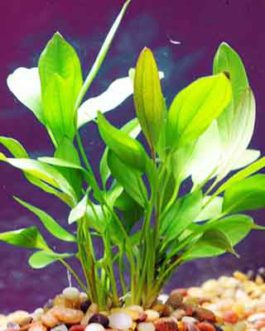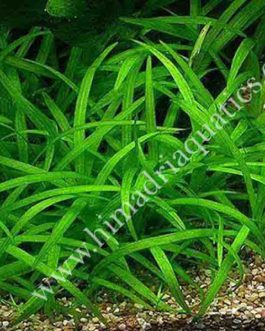Peacock Ginger (plant clump)
Original price was: ₹200.₹89Current price is: ₹89.
11 in stock
Description
Quantity- Plant Clump
PEACOCK GINGER
Peacock ginger belongs to the Kaempferia genus and there are several species, all native to Asia. Indoors or out, both grow best at temperatures of at least 68 degrees Fahrenheit and should not be exposed to temperatures below 50. Both ginger and turmeric grow from a rhizome (a fleshy root) that is the edible part of the plant. The rhizomes often can be purchased through a mail-order nursery or at a grocery store. If you plant in growing zones where it CAN flourish, ginger will go dormant during the winter months, triggered by less light and colder temperatures. Then it will come back in the spring, without a worry.
Put aside as much as you want for your own use and store the rest over winter in a dark, dry place. Replant it in spring. In tropical and subtropical zones, ginger can be left in the ground throughout the year. They are largely grown for the decorative foliage, although they also produce pretty little flowers, usually pale purple to pink. Peacock gingers are shade-loving perennials that make great groundcovers here in Florida. Most bloom throughout the summer with small pink or purple flowers, but peacock gingers are best known for their beautiful leaves. The elaborately-striped leaves of the peacock ginger give this plant its common name
The leaves are showy and attractive, growing between 4 and 10 inches (10 to 25 cm.) long depending on the variety. The leaves are elaborately patterned with purple, shades of green, and even silver. For their love of shade, pretty foliage, and ground covering duties, the peacock ginger is sometimes known as the hosta of the south. Peacock ginger plants should not be confused with the peacock plant. Common names can be confusing, but most plants you’ll see labeled as peacock plant are tall, tropical plants that are hardy only through zone 10 or 11.
In most areas, it is used as a houseplant and will not survive outdoors. Several common varieties are found in nurseries in warm regions, including a taller variety called Grande. This peacock ginger can grow up to two feet (61 cm.) tall. Most are much shorter, though, like Silver Spot, with dark green and silver leaves, and Tropical Crocus, so named because its flowers emerge in the spring before the new leave. Native to Southeast Asia, Peacock Ginger has oval shaped leaves up to about 6 in across and 8 in in length that lie almost flat on
Peacock gingers will gradually spread to fill an area, making them an ideal groundcover. Their knack for making new plants also means. These dazzling plants – marantas, calatheas, stromanthes, and ctenanthes – have colorful, patterned leaves that lift upward in the evening, giving them their common name.
GROW
Plant the rhizomes 6 to 8 inches apart, 2 to 4 inches deep, and with the growth buds pointing upward. They can be planted whole or in smaller pieces with a couple of growing buds each. Ginger plants will grow to about 2 to 3 feet tall.
INDOOR PLANTS
In most areas, it is used as a houseplant and will not survive outdoors. Several common varieties are found in nurseries in warm regions, including a taller variety called Grande. This peacock ginger can grow up to two feet (61 cm.) tall.
COLOUR
Grow Tricolor as a container plant in any quality soilless growing medium. The medium should be kept evenly moist during the growing season, but allowed to dry a little more between waterings in the cooler, darker months indoors. Fertilize periodically during the growing season only.
GROWTH
Ginger thrives in partial shade, or at most, areas with morning sun. They are best suited planted away from large roots, and ideally should be sheltered from wind and moisture. Aim to keep the soil at a warm temperate between 22 to 25ºC (71 to 77ºF), before the ginger plant germinates.
FOUNDED
Ginger plant (Zingiber officinale) may seem like a mysterious herb to grow. The knobby ginger root is found in grocery stores but very rarely do you find it …
ORNAMENTAL PLANTS
Grasp the base of the stem with the dead or dying blossom. Use pruning shears to cut the stem off near the base of the plant. Ginger plant stems only produce one blossom before dying, so pruning these off makes the plant more attractive. Prune these stems continuously throughout the year each time a bloom fade.
EDIBLE
Not all ginger plants are edible. Ornamental varieties are grown for their showy flowers and foliage. Common ginger, also called culinary ginger, is one of the most popular edible types.
LIFECYCLE
Ginger attains full maturity in 210-240 days after planting. Harvesting of ginger for vegetable purpose starts after 180 days based on the demand. However, for making dry ginger, the matured rhizomes are harvested at full maturity i.e. when the leaves turn yellow and start drying
USES
The oil of peacock ginger is used in creams, soaps, and perfumes. The medicinal uses include throat infection, stimulating new cell growth, and stimulating new cell growth.
Ginger has been used for thousands of years for the treatment of numerous ailments, such a jis colds, nausea, arthritis, migraines, and hypertension. The medicinal, chemical, and pharmacological properties of ginger have been extensively reviewed (Surh, Lee, and Lee 1998; Ernst and Pittler 2000; Afzal et al.
FAMILY
Zingiberaceae, the ginger family of flowering plants, the largest family of the order Zingiberales, containig about 56 genera and about 1,300 species.
SCIENTIFIC NAME
Zingiber officinale (family Zingiberaceae) is a dietary component commonly known as ginger. The rhizome of the plant has been used in the treatment of colds, asthma, and bronchitis (Ram et al.,
MEDICAL TERMS
(JIN-jer) An herb with a root that has been used in cooking, and by some cultures to treat nausea, vomiting, and certain other medical conditions. It is being studied in the treatment of nausea and vomiting caused by cancer chemotherapy. The scientific name is Zingiber officianale.
BOTANICAL FAMILY
Zingiberaceae commonly known as ginger family, is a family of flowering plants comprising more than 1300 species divided into about 52 genera of aromatic perennial herbs with creeping horizontal or tuberous rhizomes, distributed throughout tropical Africa, Asia, and the America.
VITAMINS
When you’re eating ginger, you’re eating the root (called the rhizome), which resembles a smaller sweet potato or even a gnarled tree. However, ginger packs a powerful punch. Not only does it contain vitamin C, magnesium and potassium, but it also provides multiple health benefits.
HERB PLANT
Ginger is listed as an herb in many culinary recipes while others classify it as a spice. Some call dried ginger powder a spice while calling the fresh root version an herb.
FACTS
Ginger is actually a rhizome, not a root. …
The ginger plant is an herb.
Ginger is a part of the Zingiberaceae family, which also includes turmeric and cardamom.
Ginger is native to southeastern Asia.
You can grow ginger from rhizomes found at grocery stores.
TASTE
The flavor of fresh ginger is slightly peppery and sweet, with a pungent and spicy aroma. Much like garlic, fresh ginger mellows with cooking and turns bitter if burned. The ground form is not as strongly flavored but has a warm bite and a little sweetness.
SMELL
The saliva and breath analyses carried out on human volunteers show that the enzyme breaks down malodorous sulfur-containing compounds. In this way, it is able to reduce the long-lasting aftertaste of many foods such as coffee. “As a result, our breath also smells better,”
DISCOVERED
Ginger originated in Maritime Southeast Asia and was likely domesticated first by the Austronesian peoples. It was transported with them throughout the Indo-Pacific during the Austronesian expansion (c. 5,000 BP), reaching as far as Hawaii.
Item Ginger plant
Climate Warm and humid
Difficulty Level Easy to grow
Colour Red pink or yellow
Fertilizer Use low nitrogen fertilizer
Only logged in customers who have purchased this product may leave a review.










Reviews
There are no reviews yet.